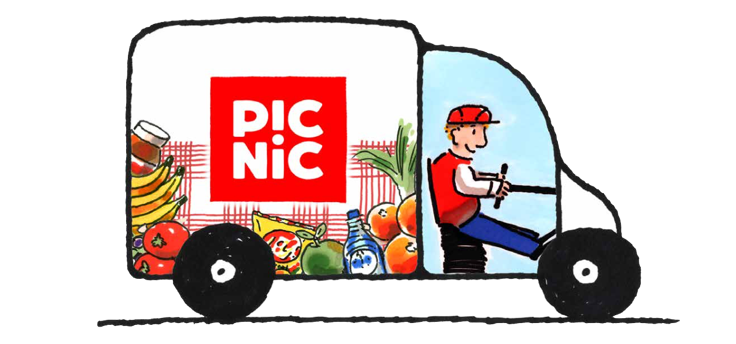For many years, the Dutch grocery market has been dominated by large companies, such as Albert Heijn, Jumbo and Lidl. These traditional supermarkets have a very efficient supply chain to get food items from producers to consumers for the lowest possible price. They operate from a big warehouse and many stores, in which they use the consumers as store pickers. Technology did change some parts of our daily grocery shopping experience, but this sector has not seen the shifts other industries have experienced. In the early 2000’s, online grocery models were emerging. Customers could now get their groceries delivered to their home, but what the supermarkets essentially did, was replacing the shopping cart of the consumers by a car of the store. This made the supply chain not shorter, but even longer, and shopping in this new way is more expensive. However online prices are equal to prices in physical stores, customers need to pay high service costs, have a high minimum amount to order and the delivery is slow and imprecise. Picnic gave people a mobile application to order their groceries. When Picnic receives the order, they start gathering supplies in their main distribution centres. An order picker will then start collecting the ordered items and when the order is complete, the groceries are delivered for free by a small electric vehicle. The customers can follow their orders on the application and can see the exact time of arrival. In this way, Picnic made the supply chain shorter and because they have no physical stores and the accompanying high housing and labour costs, the products are even cheaper than in the traditional, physical stores.
The main message is that advances in information technology affects firm and market structures. When looking at the theory of electronic markets and hierarchies, Picnic has more characteristics of a ‘market’, since their customers are not obligated to work with a predetermined supplier. Also, time asset specificity has an influence on Picnic because it is of great importance that the groceries reach the customer in time, before losing its value. Think about bananas, for example. If the delivery is too late, the bananas will be rotten and have no value for the customer anymore. Furthermore, the complexity of product description, which is the information needed for a buyer to make a selection, is very low for Picnic, underlining the ‘market’ characteristic. All new information technologies have greatly reduced both the time and costs of communicating information and enables Picnic to connect different buyers and suppliers through a central database.
If we have a closer look at some of Porter’s five forces, we see that the industry rivalry and the threat of substitutes are high and the switching costs are low. Hence, we consider it very admirable that Picnic is growing this fast and proves it can go against the big traditional supermarket. In the first half of 2017 their customer base doubled and they aim for €100 million revenue in 2017. The national average for online grocery shopping is only 2%, so there is an excellent potential growth. We are very interested what the future will bring – maybe even virtual reality shopping? – and cannot wait until Picnic starts delivering in Rotterdam!
https://www.youtube.com/watch?v=S82bJQyO-P8&feature=youtu.be
Sources:
https://www.picnic.nl
https://endlesssuppliesbiz.blogspot.de/2017/06/joris-beckers-picnic-picnics-founding.html
Malone, T.W., Yates, J., and Benjamin, R.I. 1987. Electronic Markets and Electronic
Hierarchies. Communications of the ACM 30(6) 484-497.
Dimoka, A., Hong, Y., and Pavlou, P.A. 2012. On Product Uncertainty in Online Markets:
Theory and Evidence. MIS Quarterly 36(2) 395-426.
Lu, Y., Gupta, A., Ketter, W. and van Heck, E. 2016. Exploring Bidder Heterogeneity in
Multi-channel Sequential B2B Auctions: Evidence from the Dutch Flower Auctions. MIS
Quarterly, 40 (3), pp.645-662.

